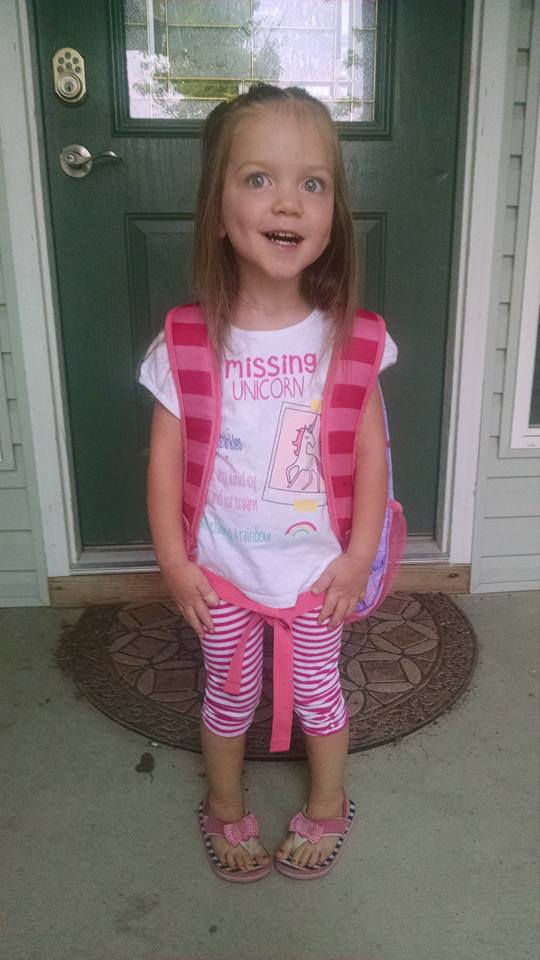
For most of us this week was marked by transitions. Social media feeds with first day of school pictures, last minute errands and a deep sense of anxiety for everyone as we face the natural challenges of a new grade, new routines and new friends. If you have toddlers going to daycare for the first time don’t be surprised if you find yourself wanting to stay with them the first, second or third day.
Will Their Needs Be Met?
There is an unspoken language between parents and babies that allows for you to instinctually meet basic needs. You know every expression and can interpret every cry and whine. When the time comes to drop them at daycare you will question the capacity of the caregivers to cater to your child the way you do it at home. If this is you, you are not alone. The sentiment is prevalent among most parents and it is absolutely valid. The reality is that your baby as well as their caregivers will go through a transitional period in which they will learn more about each other. With a little luck, within weeks there will be a new normal.
What About Asking For Help?
Your little one has needs. Needs for food, comfort and rest which are best met if he or she is able to convey preferences. At home these needs are quickly met without having to compete with other children for the attention of the caregiver. At daycare things change. With this in mind one of the best things we can do for our little ones is to empower them with communication tools that can help create a seamless transition.
Every toddler is different thus each parent should customize their sign deck to match the needs of their little one. Here are a few categories to help you select the best baby signs for your toddler:
Favorite Foods
Your baby needs to be able to communicate if he is thirsty or hungry. Additionally, you want to give them signs for their favorite foods. Pick signs like cracker, water, juice, berries, grapes, cheese and milk. Also give your baby signs like more and all done.
Favorite Toys
In their first daycare interactions your little one will be challenged with concepts like sharing and other play-related dynamics. Give them baby signs for things like their favorite toy or blanket as well as signs for common toys available at their daycare. We love signs like blocks, playground, swing, slide, doll, truck, share and mine. We also like teaching signs like take turns.
Feelings & Fears
This is where baby sign language is most useful. Teach your baby signs that let them convey discomfort, fear etc. We love to teach signs like, afraid, happy, sad, sleepy, frustrated and funny.
Places & People
Relationships with people can be a source of stress or a source of comfort for your baby. Teach them signs like mom, dad, nanny, teacher, friend and sister. Also include signs like doctor and nurse.
If you are ready to start communicating with your baby we encourage you to take advantage of our collection of digital and printed resources.
The Standard Baby Sign Language Kit, bundles together everything you need to get started with signing in one box, at a steep discount. The kit includes: (1) Baby Sign Language Guide Book; (2) Baby Sign Language Dictionary: (3) Baby Sign Language Flash Cards; and (4) Baby Sign Language Wall Chart.
Baby Sign Language Guide Book shows you how to teach your child how to sign. The book begins with a Quick Start Guide that will teach you your first signs and having you ready to sign in 30 minutes. As your baby progresses, you can delve into more advanced topics like combining signs to make phrases, using props, and transitioning to speech. (Regularly $19.95)
Baby Sign Language Dictionary contains over 600 signs including the most common words, the alphabet and numbers. The dictionary helps you expand your child’s vocabulary, and has the breadth of coverage that lets you follow any child’s natural interests. Each sign is illustrated with two or more diagrams, showing you the starting position, the ending position, and intermediate motion. This makes learning new signs easy. (Regularly $19.95)
Baby Sign Language Flash Cards include 52 sturdy board (4×6 inches) flash cards, covering a variety of basic signs. The flash cards allow you to teach words, such as animal names, that Baby is not exposed to in everyday life. The face of the flash cards shows the word and image for the child. The back of the flash cards show how the sign is performed, a handy reminder for the adult. (Regularly $24.95)
Baby Sign Language Wall Chart includes 22 basic signs, and makes a handy reminder for caregivers. The Baby Sign Language Wall Chart covers basic signs, like eat, drink, and sleep. Hang the poster in Baby’s Nursery to help babysitters, or other occasional caregivers learn and decode the most commonly used baby signs. (Regularly $9.95)

100% Signing Guarantee
Your baby signs to your complete satisfaction, or you get a full refund.
No questions. No time limits. No regrets.
Baby Sign Language Guide Book
Learn the best techniques for effectively teaching baby sign language. Including:
• Quick Start Guide – learn the first 10 signs and the basic principles required to start teaching your baby to sign (Chapter 1).
• Advanced Teaching Methods – use teaching aids like books, flash cards, and toys to keep lessons interesting and challenging (Chapter 5).
• Phrases – teach your baby to combine signs and communicate more complex thoughts (Chapter 6).
• Taming the Terrible Twos – reduce frustration and tantrums by enabling your toddler to communicate (Chapter 7).
• Transitioning to Speech – use sign language to expedite and improve speech development (Chapter 8).

Sarah learned her first 10 signs at six month and it made our lives much easier. Instead of screaming, she could tell us when she was hungry, thirsty, or tired. She learned another 50 signs by nine months and that was a blast. Now she is talking much earlier than the other children in her preschool and we think it is because of her signing.
We can’t imagine missing out on all the little things she shared with baby sign language. Thank You!
 Many of our babies are quickly becoming active and inquisitive toddlers. As parents and educators we are to join our little ones side-by-side as they discover the world around them and learn new skills that will remain with them for a lifetime.
Many of our babies are quickly becoming active and inquisitive toddlers. As parents and educators we are to join our little ones side-by-side as they discover the world around them and learn new skills that will remain with them for a lifetime.














